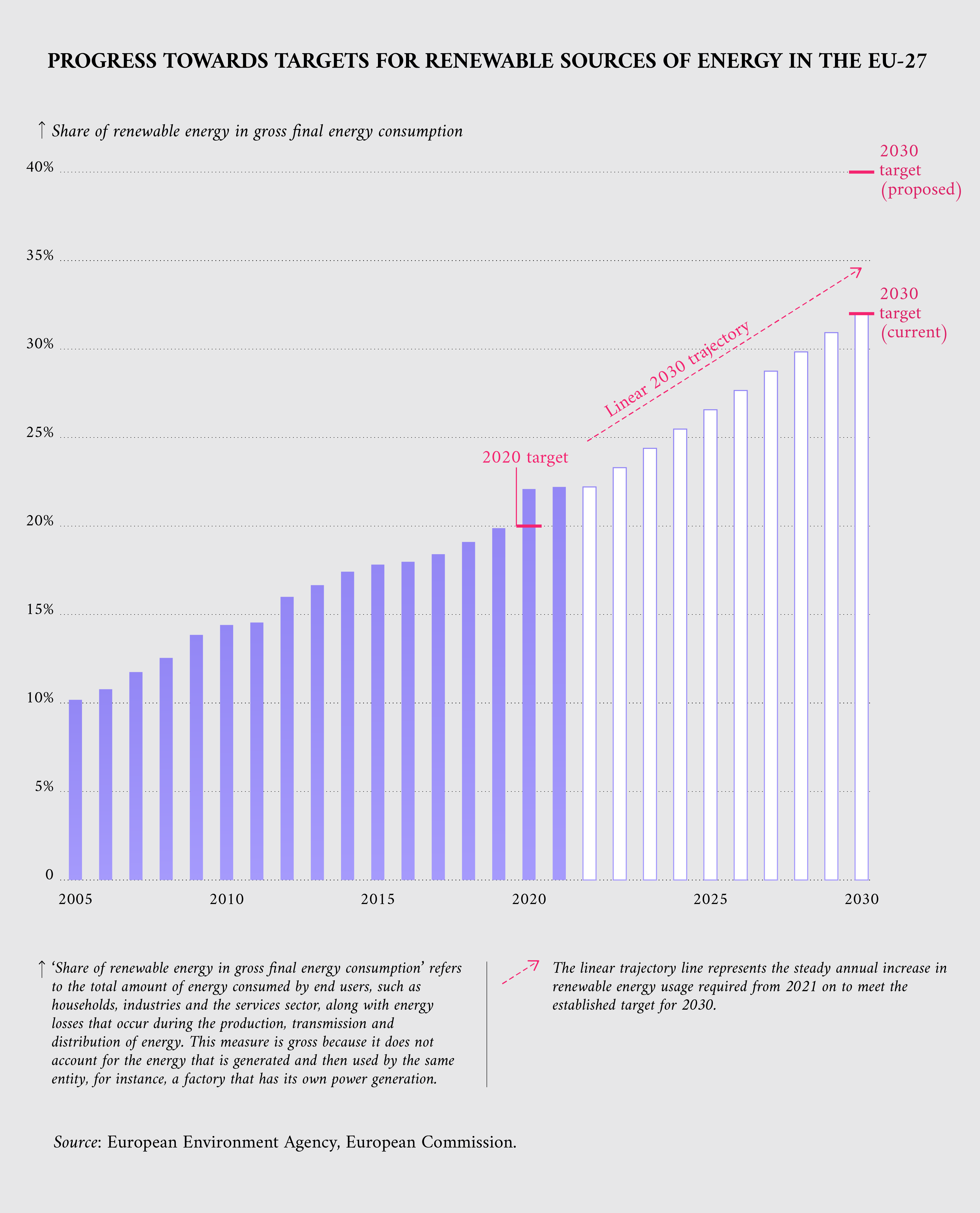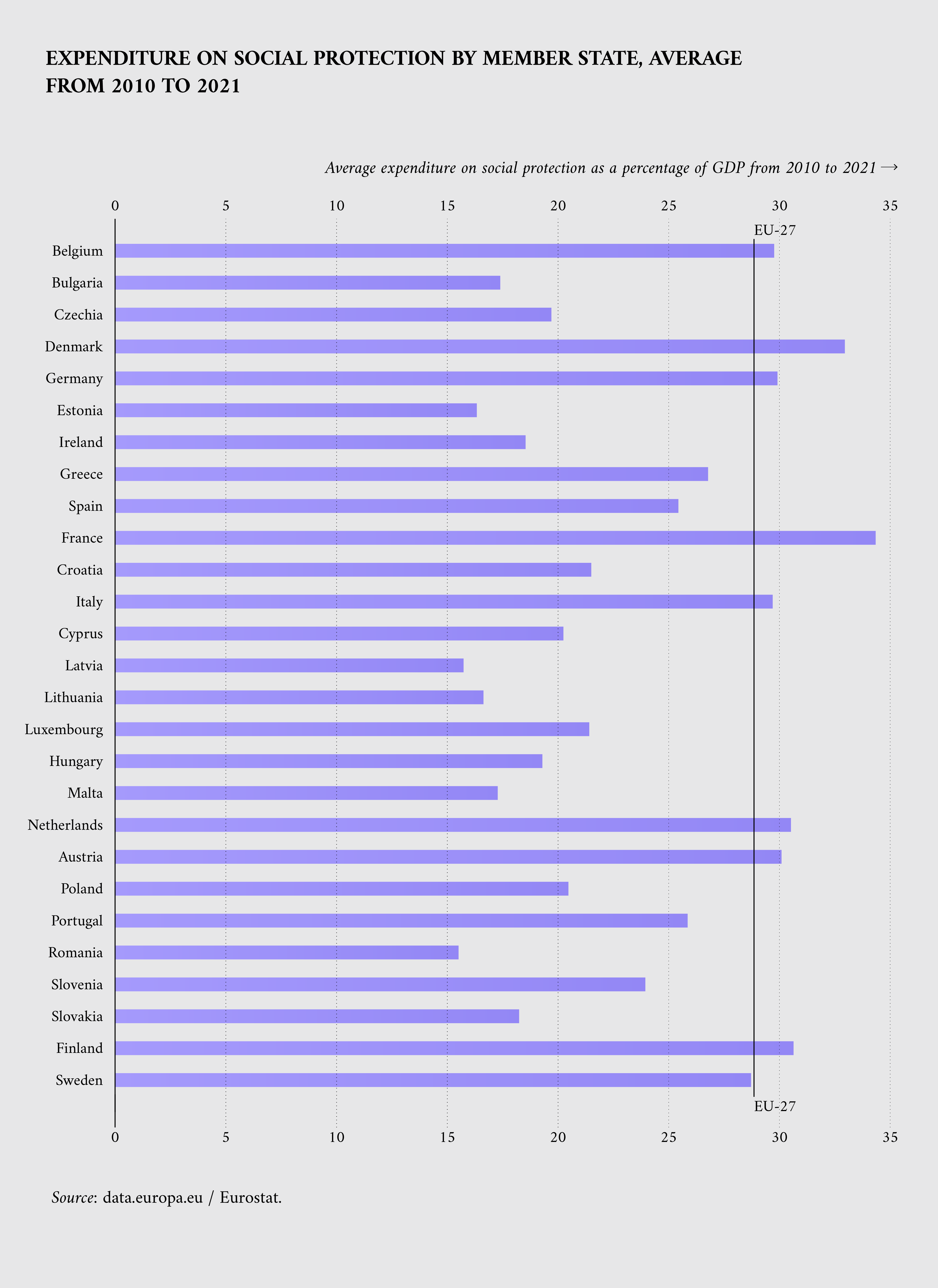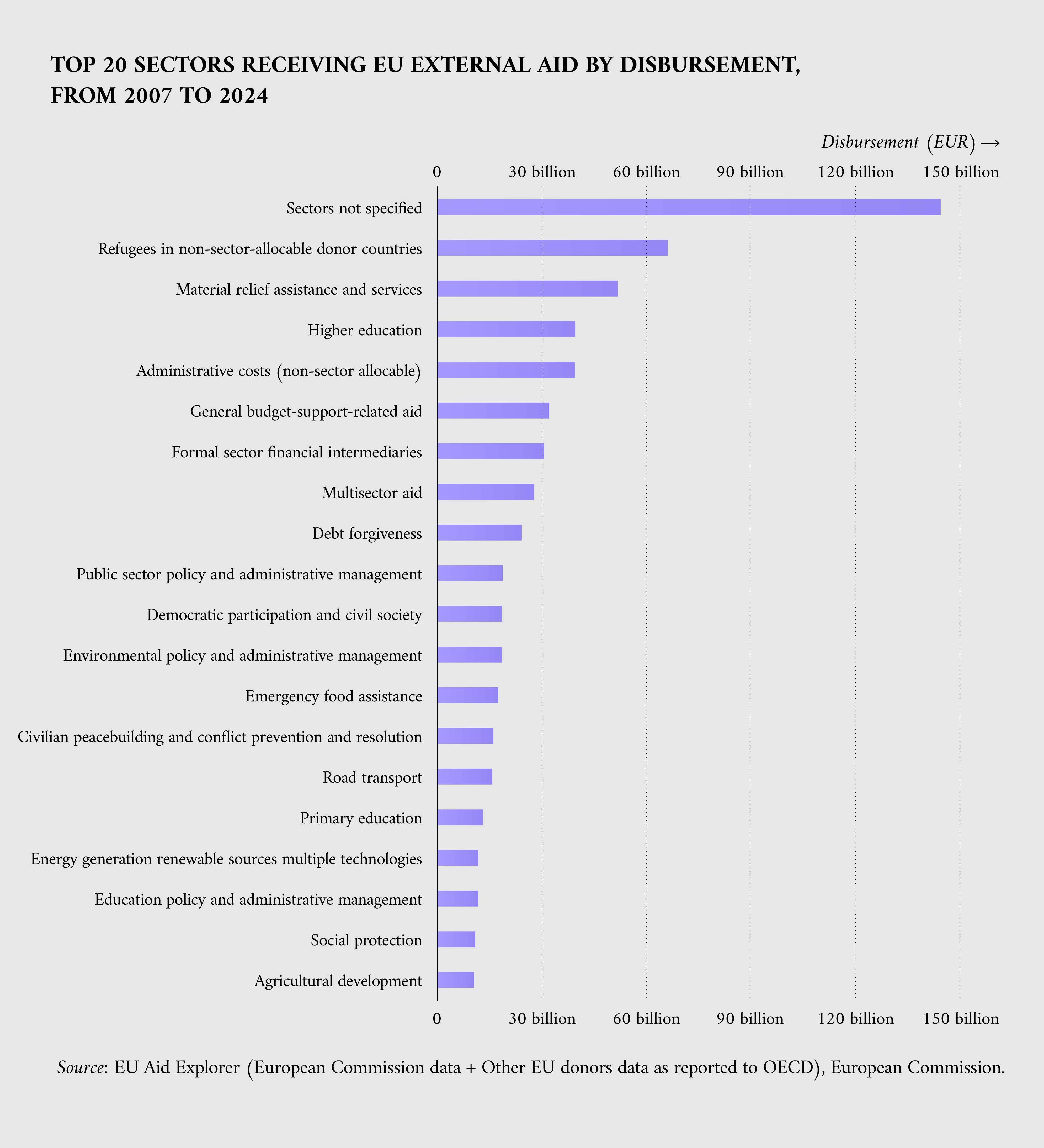Using open data to explore Belgium’s priorities at the Council of the European Union
Open data reveals the EU’s trajectory towards joint objectives
The Council of the European Union is one of the three main institutions involved in EU decision-making. It comprises ministers from each EU Member State who negotiate and adopt legislative proposals together with the European Parliament. The Presidency of the Council rotates every 6 months. Following the end of the Spanish Presidency in December 2023, Belgium assumed the presidency from 1 January to 30 June 2024. Hungary will take over in July 2024. You can read more about the priorities of the Spanish Presidency in our previous data story.
The presidencies of Belgium, Spain and Hungary collectively form a trio presidency, jointly setting a common programme for an 18-month period. While the common programme serves as a foundational framework, individual countries retain the flexibility to establish individual priorities. The trio programme is focused on three policy areas: (1) enhancing the twin green and digital transitions; (2) prioritising fairness and inclusivity; and (3) strengthening international partnerships, security and trade policies while asserting EU values. The Belgian Presidency has outlined six priorities for its semester. These echo continuity with the Spanish Presidency while also adding innovative approaches to the common objectives.
Open data can provide insights into the different political priorities and facilitate tracking the progress towards joint EU objectives. This data story analyses the EU trend in three key priorities of the Belgian Presidency that exemplify the three objectives of the trio programme: (1) pursuing a green and just transition; (2) reinforcing the social and health agenda; and (3) promoting a global Europe.
Pursuing a green and just transition
The commitment to a climate transition is at the heart of the Belgian Presidency’s programme. In line with the broader EU objectives of the European Green Deal, Belgium aims to enhance the EU’s circular economy and the deployment of low-carbon energy sources. This focus echoes the Spanish Presidency’s emphasis on the EU’s potential to lead in renewable energy.
Open data is crucial in monitoring the energy transition and guiding the policymaking process. The renewable energy directive, for instance, mandates a binding target of 42.5 % renewable energy sources (RES) by 2030, a goal revised upwards from 32 % in 2021 as part of the ambitious ‘Fit for 55’ climate package aimed at reducing greenhouse gas emissions by at least 55 % from 1990 levels. But how are Member States progressing in reaching this target? According to data illustrated in Figure 1 – a chart showing RES progression – the share of RES utilisation has more than doubled from 2005 to 2021, successfully meeting the 2020 target of 20 % from the renewable energy directive. Extrapolating data linearly beyond 2021 suggests the EU is on track to reach 32 % RES by 2030. However, this falls 10 percentage points short of the revised 2030 target, underscoring the need for accelerated efforts. This analysis, made possible through open data, highlights the crucial role of transparent, accessible information in evaluating progress and adjusting policies accordingly.
It should be noted that relying solely on a linear projection to forecast RES growth does not take into account the dynamic impacts of increased economic initiatives, political will and technological advancements in the coming years. For example, several EU green initiatives and investments in new technologies could significantly accelerate the environmental transition. Open data will be instrumental in this context, not just for tracking progress towards the EU environmental objectives, but also for analysing the effectiveness of these initiatives and adjusting strategies accordingly.

Figure 1: Share of renewable energy in gross final energy consumption at the EU level from 2005 to 2030, highlighting the 2020 and 2030 targets of the renewable energy directive (Source: European Environment Agency). NB: Early estimates for 2022 (not included in the dataset) show a 22.5 % share of renewable energy.
Reinforcing our social and health agenda
The Belgian Presidency aims to enhance the EU’s social agenda, accelerate progress towards a more inclusive European society and ensure access to sustainable social protection. This objective aligns with the Spanish Presidency’s focus on fostering a more inclusive and fair society, highlighting the continuity across the trio presidency.
Open data can be used to understand the economic perspective of social policies. Figure 2 shows that the EU’s expenditure on social protection as a percentage of gross domestic product (GDP) is quite heterogeneous. Every country has its own national context and assigns social spending based on its requirements. Average EU expenditure on social protection between 2010 and 2021 ranged between approximately 15 % and 35 % of GDP. Eight Member States invested more than the EU average, which stood at around 28 % for the selected period. The three Member States that spent the most on social protection were Denmark, France and the Netherlands. You can dive deeper into the dataset to explore how countries’ expenditures have changed over time and to which categories the expenditures are allocated.

Figure 2: Average expenditure on social protection as a percentage of GDP from 2010 to 2021 (Source: data.europa.eu, Eurostat)
Promoting a global Europe
The Belgian Presidency prioritises strengthening Europe’s global stance by leveraging, among other things, the EU’s development and humanitarian assistance capacity.
Humanitarian aid is highlighted as a key tool for the EU’s commitment to global outreach, showcasing its efforts to support countries worldwide. Open data on EU international aid fosters transparency and enables us to track the distribution of disbursements. As the world’s largest donor of external aid, providing on average over EUR 70 billion annually, EU funding is directed worldwide to help tackle poverty and to advance global development. Figure 3 shows an elaboration of the data available on the EU Aid Explorer, a web tool providing easy access to data on the EU’s aid around the world. From 2007 to the beginning of 2024, aside from aid in ‘sectors not specified’ (flows that cannot be allocated to a specific sector, typically including core funding to multilateral organisations), the three categories that received the most funding—cumulatively around EUR 157 billion—are ‘refugees in non-sector allocable donor countries’, ‘material relief assistance and services’, and ‘higher education’. Figure 3 also shows that EU funding is diversified among numerous categories, addressing various needs in the recipient countries. You can continue to explore the dashboard for additional insights.

Figure 3: Top 20 categories receiving EU external aid by disbursement from 2007 to 2024 (Source: EU Aid Explorer, European Commission)
Conclusion
This data story examined three priorities of the Belgian Presidency, illustrating both the continuity and innovative approaches of the common programme. Open data on renewable energy sources shows the progress made in achieving a net-zero society; open data on social protection helps us to easily track the financial perspective of the EU’s social policies; and open data on humanitarian aid shows this important side of the EU’s global role. Overall, open data is crucial to provide insights into and advise data-driven policymaking.
Do you want to explore what open data can reveal about the Belgian Presidency’s other priorities? You can access numerous open datasets on data.europa.eu. Stay updated on our upcoming data stories and webinars by subscribing to our newsletter and following data.europa.eu on social media.
